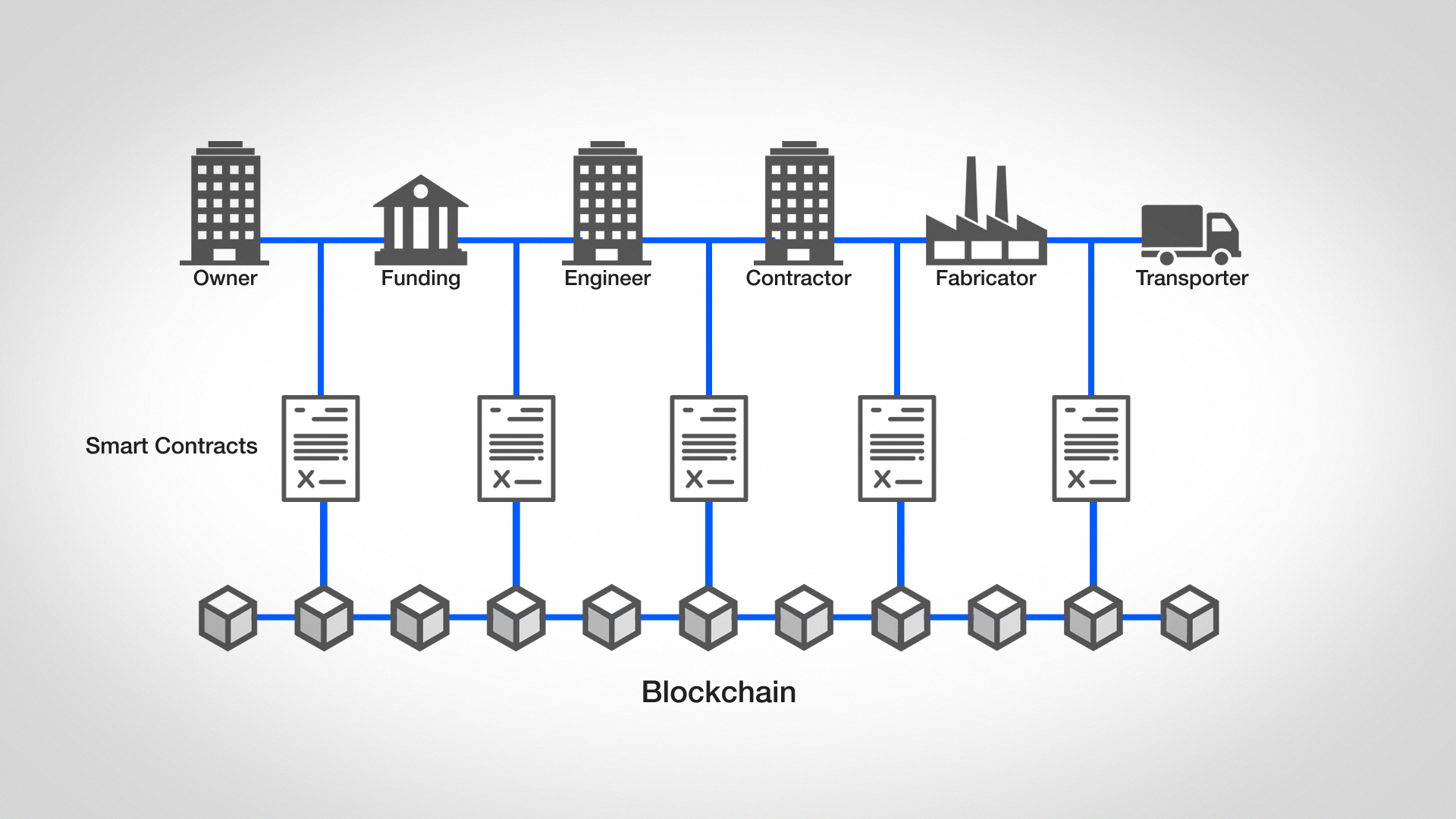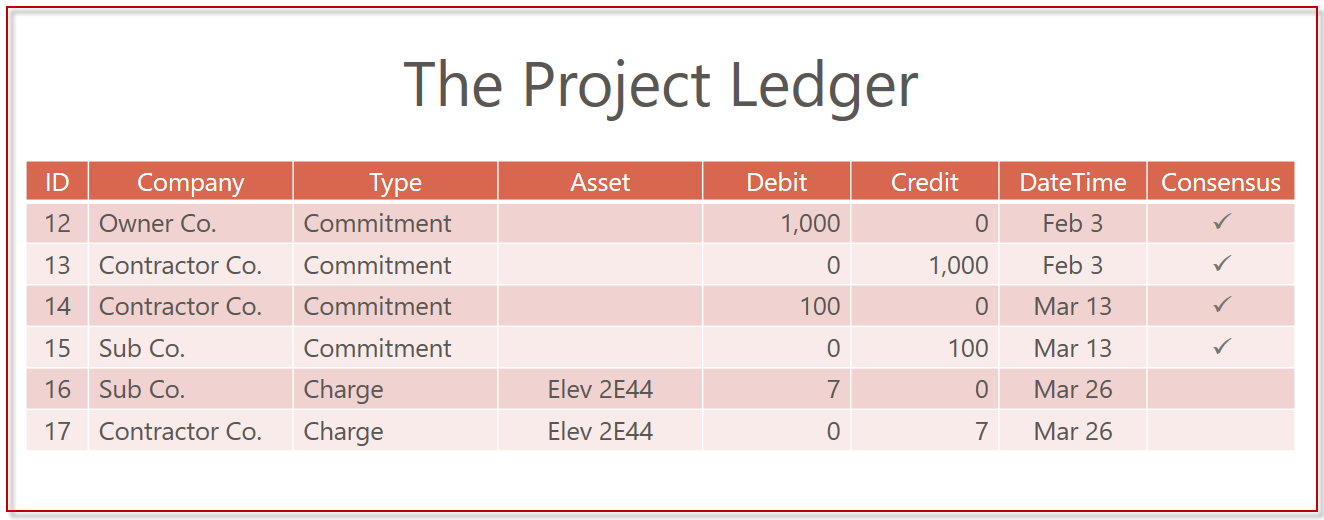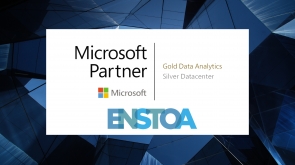
Driving Ahead on Data
Construction is currently at a tipping point, in need of transformation to drive it forward. And, the Internet of Things will revolutionize construction. It especially offers a unique opportunity - and benefit - to the Asia-Pacific markets since the legacy process and systems seen in other developed countries are not present, writes Jordan Cram.
The Internet of Things (IoT) is becoming less an idea and more a reality. McKinsey predicts the IoT will have $11-trillion in economic impact by 2025. The potential is amazing – from the Waze mobile app that navigates traffic to GE sensor data software that predicts outages. With the ability to both sense and react, smart systems can also be integrated into the physical world of construction, increasing efficiencies more than ever before.
Construction is one of the world’s largest industries, providing incredible social value through infrastructure projects. Yet, the industry is currently at a tipping point, in need of transformation to drive it forward. When it comes to embracing IoT for major building projects, a strong vision is critical. That vision must be clear, communicated effectively, understood and properly funded.
IoT requires full adoption to have real impact. Every stakeholder must be on board. It can’t be just one team inside of one company; it needs to be the whole company and even the entire supply chain – from the owners, contractors and subcontractors to the engineering companies, material manufacturers, banks and financial institutions. Transformation must come from those of us working in industry.
Inhibiting Change
First, let’s address what is inhibiting change.
Decades from now, we will see data as an asset as important as land is today. For now, though, rather than land, think of data as water.
We cannot exist without water. Water fuels and sustains our bodies. It sustains our societies. Yet, water is often wasted. Water can be used in very simple, but effective ways without a lot of technology. It can also be used with sophisticated technology to produce much more.
For data to not go to waste, it must be analyzed and utilized. According to IDC’s Data Age 2025 study, by the end of 2025, a mere 3.0 per cent of the data produced globally will actually be analyzed. Today, that number still sits below one per cent.
Data shouldn’t only be stored – that’s expensive and, ultimately, wasteful. It should be carefully analyzed and learning from analysis, applied. Determining how to best use existing data brings us to the topic of machine learning.
Machine learning, a branch of the field of artificial intelligence, is an incredibly powerful technology. Arthur Samuel, a pioneer in AI, offered the following, informal definition in 1959: “(machine learning is) the field of study that gives computers the ability to learn without being explicitly programmed.”
The field of machine learning is both broad and deep. It ranges from small to large, from simple to complex. Today, modern processors, distributive computational resources, reams of rich data, and a little know-how have made machine learning a convenient tool that generates insights in real time. Sophisticated technologies, like machine learning, require big data sets. If data is sitting in little silos, it can’t provide much value.
Returning for a moment to the analogy of data as an asset like land – picture several land holders, each with their own small plot. If the plots are kept separately, not much can be done with the space. That is where construction is as an industry. Individuals are holding on to data. Teams are holding on to data. Companies are holding on to data.
To move forward, those of us in construction must take on the challenge of connecting our different data sources. We must rework our supply chain relationships – and Blockchain is how we are going to do it!
Believe it or not, Blockchain is very old. It was created in the early 1990s by a group of researchers who wanted to protect and make immutable their research and articles. It became famous with Bitcoin several years ago, but it is not a new technology or concept.
So, what is Blockchain?
Imagine you have a block, which you can think of as a box. Content is put inside the block (box) and it is assigned a unique ‘hash’ or code.
Each block is placed into the blockchain by attaching to the previous block using its hash to cement a unique connection.


A smart contract essentially puts an agreement between providers in code. Above, an example of a smart contract between a contractor and a trade.
If the content in any block is changed, the hash also changes and the full blockchain must reset. As a result, this easy to administer technology nearly guarantees immutability.
Once complete, the chain of blocks gets copied into various nodes, which are distributed on different servers around the world. Each node then does a check with the other nodes to confirm that the hashes and blocks are all in sync.
As long as 51 per cent of the nodes recognize that they are the same, there is consensus. Upon reaching node consensus, fraud is statistically impossible.
Blockchain and open source technology have a perfect application in our industry – smart contracts. In construction, lengthy paper contracts are the norm. They are packed with extensive terms and conditions that no single human can remember. A smart contract essentially puts an agreement between providers in code.
Smart contracts are the workflow layer that sits on top of the blockchain. Information regarding the transaction or activity being recorded passes through a pre-defined set of rules before being added to the blockchain.

Project ledgers, created using blockchains and smart contracts, minimize waste, encourage transparency, and are tamper-evident.
These smart contracts enable each block to be automatically checked against the pre-defined rules before being processed and readily accessible to all the parties of the blockchain.
What makes smart contracts so useful in construction is that they allow us to create a project ledger. This is distinct from a contractor, subcontractor and owner each having their own general ledger (which, in all likelihood, does not completely match). Rather than replicating data, smart contracts offer a single shared source.
The paper contracts that our lawyers produce in reams and volumes can be replaced by smart contracts that specify very simple ‘if-then’ conditions. If a unit is installed, then check the quality. If the quality is confirmed, then pay the contractor.
A technologically savvy construction industry translates into more projects in shorter durations as well as faster approvals and authorizations. With data influencing the decisionmaking process, biases will be removed.
Data will not replace the need for an experienced workforce. Rather, experience in the workforce will be required to read and understand the data.
Advantage Asia-Pac?
For the Asia-Pacific market in particular, the legacy process and systems seen in other developed countries are not present. This creates a unique opportunity – and benefit – when it comes to embracing IoT. Like the mobile phone, the Asia-Pacific market can leap a generation and implement these technologies faster.
For our industry, the way to break down the silos and allow data and technology to deliver on its promise is to focus relentlessly on our supply chain relationships using open source technology. In ten years, the way we design, the way we commission projects, the way we fund projects, and the way we build them will change. In doing so, we will create a better way to build.
Jordan Cram, founder and CEO of Enstoa, believes technology is an essential enabler for organizations to continuously innovate and optimize performance. For over 20 years, he has used strategic business consulting and smart technology solutions to enable leading organizations, worldwide, to spend more strategically on improving operations – in China, the Middle East, India, Europe, North America, and Australia.
Published in EPC&I on August 28, 2018
Construction is currently at a tipping point, in need of transformation to drive it forward. And, the Internet of Things will revolutionize construction. It especially offers a unique opportunity - and benefit - to the Asia-Pacific markets since the legacy process and systems seen in other developed countries are not present, writes Jordan Cram.
The Internet of Things (IoT) is becoming less an idea and more a reality. McKinsey predicts the IoT will have $11-trillion in economic impact by 2025. The potential is amazing – from the Waze mobile app that navigates traffic to GE sensor data software that predicts outages. With the ability to both sense and react, smart systems can also be integrated into the physical world of construction, increasing efficiencies more than ever before.
Construction is one of the world’s largest industries, providing incredible social value through infrastructure projects. Yet, the industry is currently at a tipping point, in need of transformation to drive it forward. When it comes to embracing IoT for major building projects, a strong vision is critical. That vision must be clear, communicated effectively, understood and properly funded.
IoT requires full adoption to have real impact. Every stakeholder must be on board. It can’t be just one team inside of one company; it needs to be the whole company and even the entire supply chain – from the owners, contractors and subcontractors to the engineering companies, material manufacturers, banks and financial institutions. Transformation must come from those of us working in industry.
Inhibiting Change
First, let’s address what is inhibiting change.
Decades from now, we will see data as an asset as important as land is today. For now, though, rather than land, think of data as water.
We cannot exist without water. Water fuels and sustains our bodies. It sustains our societies. Yet, water is often wasted. Water can be used in very simple, but effective ways without a lot of technology. It can also be used with sophisticated technology to produce much more.
For data to not go to waste, it must be analyzed and utilized. According to IDC’s Data Age 2025 study, by the end of 2025, a mere 3.0 per cent of the data produced globally will actually be analyzed. Today, that number still sits below one per cent.
Data shouldn’t only be stored – that’s expensive and, ultimately, wasteful. It should be carefully analyzed and learning from analysis, applied. Determining how to best use existing data brings us to the topic of machine learning.
Machine learning, a branch of the field of artificial intelligence, is an incredibly powerful technology. Arthur Samuel, a pioneer in AI, offered the following, informal definition in 1959: “(machine learning is) the field of study that gives computers the ability to learn without being explicitly programmed.”
The field of machine learning is both broad and deep. It ranges from small to large, from simple to complex. Today, modern processors, distributive computational resources, reams of rich data, and a little know-how have made machine learning a convenient tool that generates insights in real time. Sophisticated technologies, like machine learning, require big data sets. If data is sitting in little silos, it can’t provide much value.
Returning for a moment to the analogy of data as an asset like land – picture several land holders, each with their own small plot. If the plots are kept separately, not much can be done with the space. That is where construction is as an industry. Individuals are holding on to data. Teams are holding on to data. Companies are holding on to data.
To move forward, those of us in construction must take on the challenge of connecting our different data sources. We must rework our supply chain relationships – and Blockchain is how we are going to do it!
Believe it or not, Blockchain is very old. It was created in the early 1990s by a group of researchers who wanted to protect and make immutable their research and articles. It became famous with Bitcoin several years ago, but it is not a new technology or concept.
So, what is Blockchain?
Imagine you have a block, which you can think of as a box. Content is put inside the block (box) and it is assigned a unique ‘hash’ or code.
Each block is placed into the blockchain by attaching to the previous block using its hash to cement a unique connection.


A smart contract essentially puts an agreement between providers in code. Above, an example of a smart contract between a contractor and a trade.
If the content in any block is changed, the hash also changes and the full blockchain must reset. As a result, this easy to administer technology nearly guarantees immutability.
Once complete, the chain of blocks gets copied into various nodes, which are distributed on different servers around the world. Each node then does a check with the other nodes to confirm that the hashes and blocks are all in sync.
As long as 51 per cent of the nodes recognize that they are the same, there is consensus. Upon reaching node consensus, fraud is statistically impossible.
Blockchain and open source technology have a perfect application in our industry – smart contracts. In construction, lengthy paper contracts are the norm. They are packed with extensive terms and conditions that no single human can remember. A smart contract essentially puts an agreement between providers in code.
Smart contracts are the workflow layer that sits on top of the blockchain. Information regarding the transaction or activity being recorded passes through a pre-defined set of rules before being added to the blockchain.

Project ledgers, created using blockchains and smart contracts, minimize waste, encourage transparency, and are tamper-evident.
These smart contracts enable each block to be automatically checked against the pre-defined rules before being processed and readily accessible to all the parties of the blockchain.
What makes smart contracts so useful in construction is that they allow us to create a project ledger. This is distinct from a contractor, subcontractor and owner each having their own general ledger (which, in all likelihood, does not completely match). Rather than replicating data, smart contracts offer a single shared source.
The paper contracts that our lawyers produce in reams and volumes can be replaced by smart contracts that specify very simple ‘if-then’ conditions. If a unit is installed, then check the quality. If the quality is confirmed, then pay the contractor.
A technologically savvy construction industry translates into more projects in shorter durations as well as faster approvals and authorizations. With data influencing the decisionmaking process, biases will be removed.
Data will not replace the need for an experienced workforce. Rather, experience in the workforce will be required to read and understand the data.
Advantage Asia-Pac?
For the Asia-Pacific market in particular, the legacy process and systems seen in other developed countries are not present. This creates a unique opportunity – and benefit – when it comes to embracing IoT. Like the mobile phone, the Asia-Pacific market can leap a generation and implement these technologies faster.
For our industry, the way to break down the silos and allow data and technology to deliver on its promise is to focus relentlessly on our supply chain relationships using open source technology. In ten years, the way we design, the way we commission projects, the way we fund projects, and the way we build them will change. In doing so, we will create a better way to build.
|
Jordan Cram, founder and CEO of Enstoa, believes technology is an essential enabler for organizations to continuously innovate and optimize performance. For over 20 years, he has used strategic business consulting and smart technology solutions to enable leading organizations, worldwide, to spend more strategically on improving operations – in China, the Middle East, India, Europe, North America, and Australia. |
Published in EPC&I on August 28, 2018




